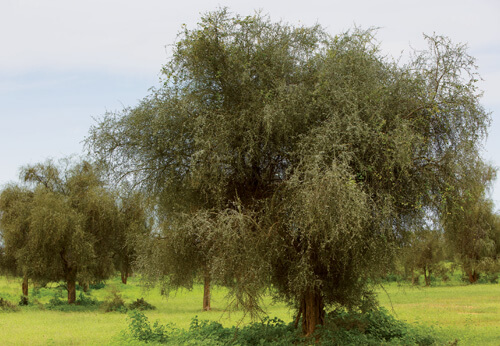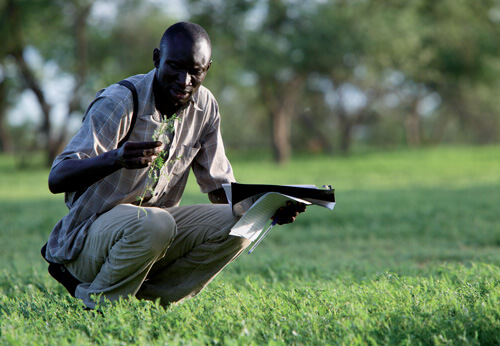The Great Green Wall: trees to halt the desert
Recreate a huge vegetation belt that will cross all of Africa to fight against desertification in the Sahel.
Creating a massive green belt stretching across all of Africa to stop the desert.
The Great Green Wall to combat desertification in the Sahel
Growing 7,000 km of dense vegetation
In the Sahel, the desert has been steadily gaining ground for many decades as the wooded areas shrink. It brings with it rural depopulation and poverty. What if we could reverse the trend?
The challenge is a considerable one: to regrow a forest and stretch it, like a green river, across the entire African continent. A long strip of green, 15 km wide, running from Dakar to Djibouti: over 7,000 km of vegetation to halt the desert's advance.
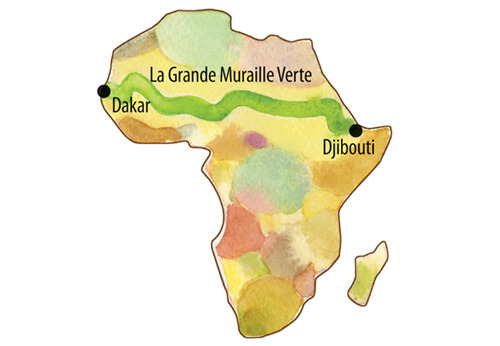 Planting thousands of trees
Planting thousands of trees
11 African countries came together in 2004 to devise this plan, founding the Pan-African Agency of the Great Green Wall. We decided to assist them by offering our support to Senegal. The project is now underway: over 80,000 desert date trees have already been planted, and over 45,000 hectares of desert have been revegetated. This is land where the desert has retreated and life has returned.
Multiplier les espèces
What to plant to ward off the desert? We needed plants that could survive in the extreme conditions of the Sahel, such as the desert date tree (Balanites aegyptiaca), certain varieties of acacia (Acacia senegal, Acacia seyal) and the jujube (Ziziphus mauritiana).
The Great Green Wall will have an even better chance of survival as the number of species it contains increases. Plant biodiversity increases resistance to climate fluctuations, insects and diseases. Other shrubs and grasses are therefore encouraged to join the trees in this vast strip of greenery.
The desert date tree
Balanites aegyptiaca (L.) Delile
(Famille : Zygophyllaceae)
This tree can live for 2 years without water. It is resistant to brushfires thanks to its thick bark, and can live for over 100 years in harsh conditions. This makes it an excellent candidate to withstand the desert's onslaught! It also makes itself useful to people in various ways, by providing fruit, fodder, raw materials for construction or craftsmanship...
What is desertification?
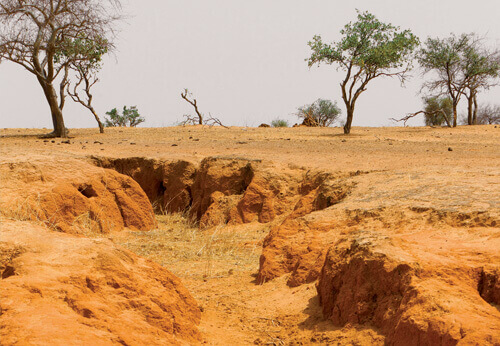 The desert does not expand on its own; it requires land to degrade and become infertile. Why? Primarily due to climate fluctuations, such as droughts, and human activity. Intensive deforestation, overgrazing and drilling all play a large role.
The desert does not expand on its own; it requires land to degrade and become infertile. Why? Primarily due to climate fluctuations, such as droughts, and human activity. Intensive deforestation, overgrazing and drilling all play a large role.
In Senegal, a strong ambition
Senegal, a pioneer in the Great Green Wall program, began planting in 2008 in Ferlo, a region in the northeast, in the heart of the Sahel. The Senegalese "Water and Forests" Department is in charge of this operation, including its monitoring and assessment, and is also responsible for raising locals' awareness. It is the executive arm of the Senegalese Great Green Wall agency.
The Great Green Wall and the fight against poverty
An interesting feature of this program is that it combines the protection of biodiversity with a humanist vision. There are tangible, everyday benefits for the local population, such as improved food availability and an additional source of income.
The mobilization of local populations
Local people's involvement is an essential aspect of this program, especially in Senegal, where the program has progressed the most.
In the Ferlo region, several nurseries have been set up, in cooperation with locals. They are the ones who watch over the saplings that will be added to the Great Green Wall, making sure they grow correctly.
The men prepare the sleeves in which the seeds are sown, water the seedlings, and watch over the protected parcels and the seedlings. In return, they are allowed to harvest the parcels' first products (fodder, gum arabic...).
Vegetable gardens for the women
In Senegal, this initiative stretches far beyond the replanting of this vast forest of desert dates. By promoting soil recovery, this new plant cover has permitted the creation of 6 fruit and vegetable gardens. In return for maintaining the forest nurseries, over 1500 women are free to cultivate them and use the fruits and vegetables they produce.
In addition to diversifying the locals' diets, these fruits and vegetables are sold at markets, providing a source of income.
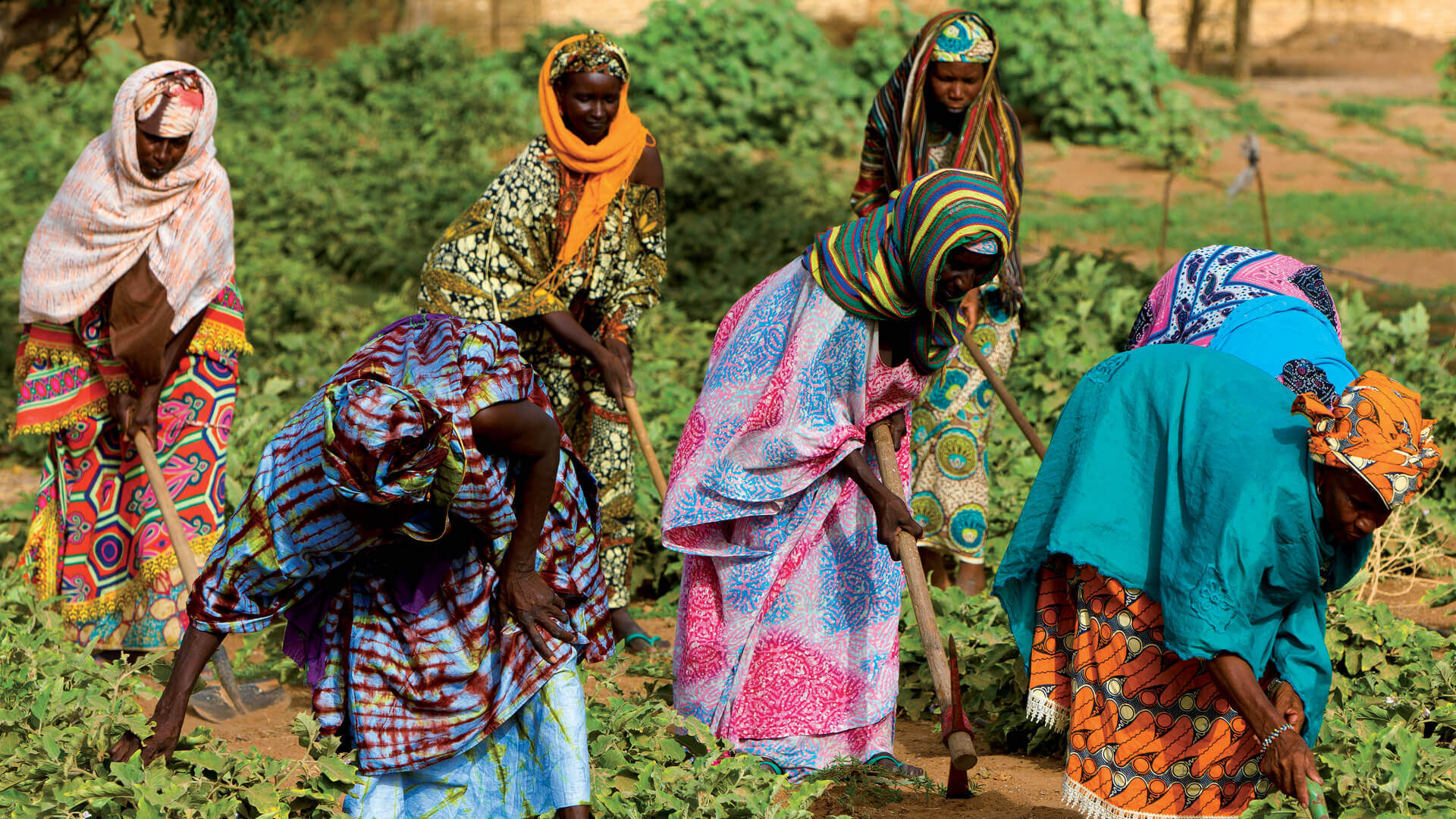
Our involvement
- he planting of 80,000 desert date trees, 10,000 per year over six years.
- The funding of 3 doctoral theses on the desert date tree and its impact on humans, health and the environment.
- Support for the annual science and medicine summer school in Senegal (civic and scientific activities, multidisciplinary exchanges).
The CNRS and its observatory
We have worked with the CNRS on this project since 2012. The National Centre for Scientific Research has established a Human-Environment Observatory (OHMi) to study the impacts of these plantations on the ecological, medical and social levels.
A project selected by “UNESCO Green Citizens, become a pathfinder for change”!
The "Great Green Wall" initiative was selected by UNESCO as an emblematic example of sustainable development education, one of a handful of projects from all over the world to be showcased.
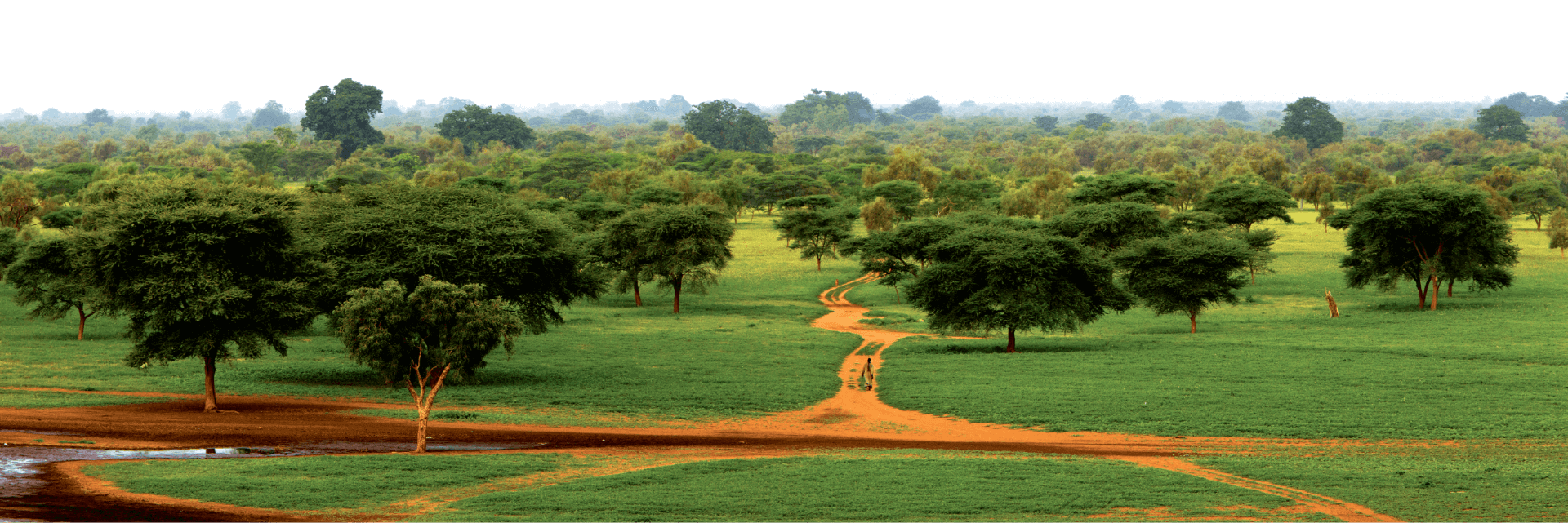
National Scientific Research Centre (CNRS)
This prestigious public research centre is probably the most famous one in France. Through its 1,053 laboratories, it covers every scientific field, from the social sciences and humanities to chemistry and nuclear physics.
A major producer of Nobel prizes and Fields medals, the CNRS has a gift for revealing talents and, more importantly, for furthering knowledge.


